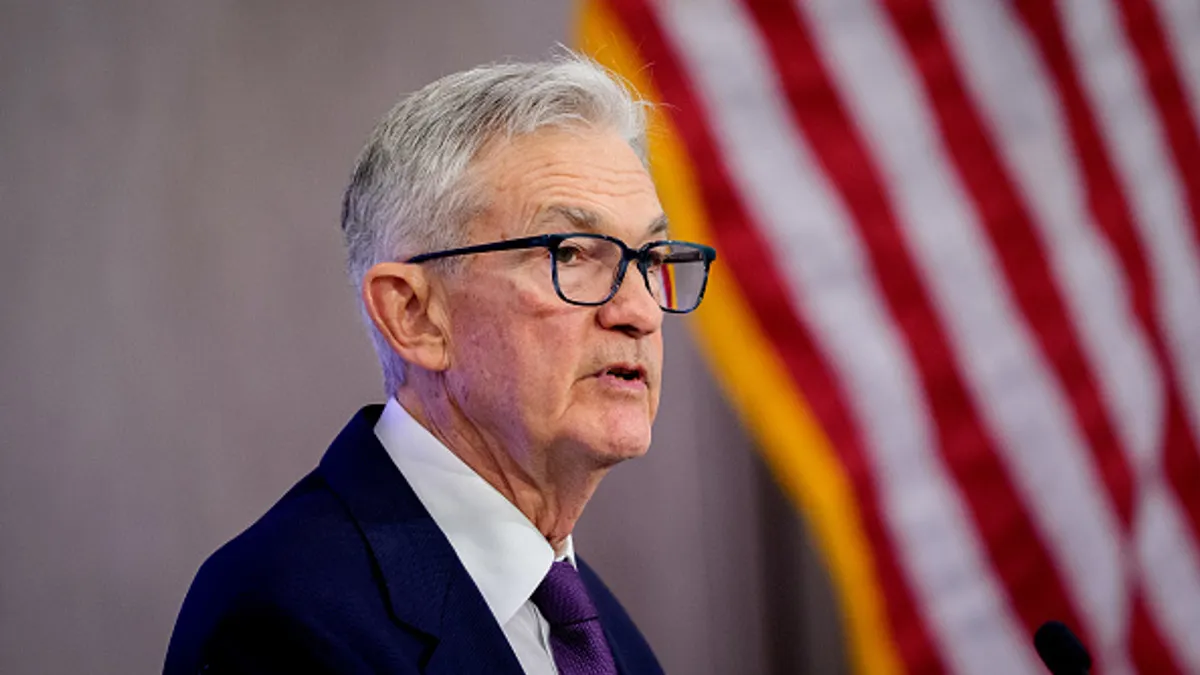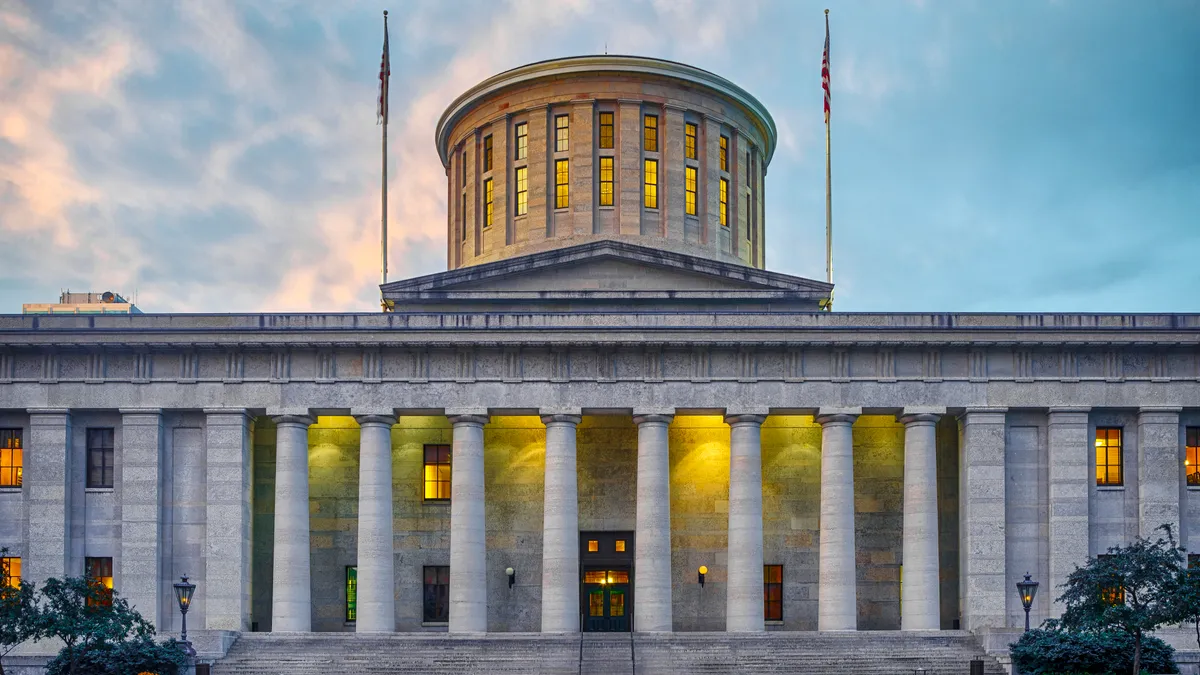Dive Brief:
- The Federal Reserve on Wednesday held the benchmark interest rate at a range between 4.25% and 4.5% while reiterating that it expects to cut borrowing costs later this year by a total of 0.5 percentage point despite higher price pressures from tariffs.
- In a median projection, Fed officials estimated that their preferred measure of inflation — the personal consumption expenditures price index less volatile food and energy prices — will end the year at 3.1%, 0.3 percentage point higher than their March estimate and well above their 2% goal. They marked down their forecast for economic growth this year to 1.4% from 1.7% in March.
- “Tariffs this year are likely to push up prices and weigh on economic activity,” Fed Chair Jerome Powell said during a press conference. He flagged the summer as the likely start of rising price pressures while emphasizing that the duration of higher, tariff-induced inflation is unclear.
Dive Insight:
Policymakers have left borrowing costs unchanged this year as they balance signs of a softening labor market against concerns that the highest U.S. tariffs in decades will reverse a trend of cooling inflation.
“For the time being, we are well positioned to wait to learn more about the likely course of the economy before considering any adjustments to our policy stance,” Powell said after a two-day monetary policy meeting.
The Fed under current conditions would usually lean toward easing monetary policy to fulfill its mandate of full employment.
Recent data suggest a “dovish” bias toward reducing rates may be in order: The four-week average of initial jobless claims rose last week from 240,750 to 245,500, the highest level since August 2023, the Labor Department said Wednesday.
Indeed, Fed officials in their median projection forecast that unemployment by the end of this year will increase from 4.2% in May to 4.5%, 0.1 percentage point higher than their March forecast.
At the same time, 10% baseline tariffs on goods from virtually all U.S. trade partners — along with the possibility of higher “reciprocal” import duties — will probably stoke inflation in coming months and dim an otherwise bright inflation outlook, according to Fed officials and private sector economists.
“Every forecaster — every outside forecaster and the Fed — is saying that we expect a meaningful amount of inflation to arrive in coming months,” Powell said.
The expectation for more stubborn price pressures cropped up in the median forecast by Fed officials. They raised their projection for the federal funds rate at the end of next year to 3.6% from 3.4% in March. They see the main rate by the end of 2027 at 3.4% rather than 3.1% as in their prior projection.
Price pressures eased more than forecast in May as companies drew down inventories that they stockpiled before the imposition of tariffs rather than pass on the higher costs to consumers.
The consumer price index, excluding volatile food and energy prices, rose 0.1% last month and 2.8% over 12 months, the Bureau of Labor Statistics said on June 11. The 12-month figure matches the rate in March and April and is the lowest annual gain in four years.
“Inflation has come down a great deal, but has been running somewhat above our 2% longer run objective,” Powell said, noting that the path of inflation is murky.
“The amount of the tariff effects, the size of the tariff effects, their duration and the time it will take are all highly uncertain,” he said.
“Many, many companies do expect to put all, or some, or all of the effect of tariffs through to the next person in the [supply] chain, and ultimately to the consumer,” he said. “Each one of those is going to be trying not to be the one to pay for the tariff.”
Consumer expectations for inflation, a gauge closely tracked by the Fed, have eased in recent weeks as U.S. trade tensions cooled.
Long-run inflation expectations fell to 4.1% this month from 4.2% in May, the University of Michigan found in a survey released Friday, as inflation eased more than forecast. The survey was completed before conflict between Israel and Iran pushed up energy prices.
Some engines of economic growth have recently shown signs of sputtering. Retail sales fell 0.9% last month after declining 0.1% in April, the Commerce Department said Tuesday. A 3.5% slump in spending at auto dealers accounted for much of the overall decline.
Industrial production also shrunk more than expected last month, declining by 0.2% following a 0.1% increase in April, the Fed said Tuesday.
The U.S. economy will likely slow to 1.3% growth this year as inflation persists above the Fed’s 2% target, the National Association for Business Economics said Monday, citing a survey of forecasters.
The economists’ projection is gloomier than recent estimates by the World Bank and OECD, which forecast U.S. GDP growth this year of 1.4% and 1.6%, respectively.
Almost four-out-of-five economists (78%) consider import duties the biggest risk to the economy during the next 12 months, followed by 7% who deem geopolitical conflicts as the top risk, NABE said.
Like Powell, the central bank’s Federal Open Market Committee holds a favorable view of the current state of the economy.
“Recent indicators suggest that economic activity has continued to expand at a solid pace,” the FOMC said in a statement. “The unemployment rate remains low, and labor market conditions remain solid. Inflation remains somewhat elevated.”















